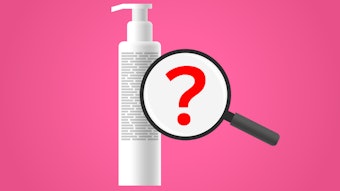Cosmetic manufacturers have always had the safety of their products top of mind. At the same time, consumers, and in particular consumer interest groups, have become increasingly concerned about the toxicity of cosmetic chemicals and the fashion that safety testing is done. Adding nanomaterials and nanotechnology into the mix poses new challenges to manufacturers, regulators and consumers.
This technology has been described as “the next revolution in cosmetics and packaging.”1 Having nanotechnology on the market brings about an entire new world of performance possibilities. It’s also spawning new regulations in regards to the packaging, contents and claims that will be introduced to the cosmetic market. It is important for all countries to continuously assess their approach to nanomaterials as they are a rapidly growing form of technology that could dramatically change the way cosmetics—particularly skin creams and lotions—function forever.
What is Nanotechnology?
Nanotechnology involves manipulating matter for the fabrication of microscale materials with at least one dimension sized from 1 to 100 nanometers.1 Nanomaterials are the product of this technology. These infinitesimally small particles can have chemical, physical and biological differences to their larger counterparts, making them very valuable to cosmetic manufacturers.
The big question here is how does nanotechnology work so well in skin care products? The skin forms a barrier to the external environment and can be impermeable to active ingredients; therefore it is necessary that efficient active delivery must pass this barrier.1 Nanotechnology is used “to modify the drug permeation/penetration by controlling the release of active substances and increasing the period of permanence on the skin.”2
This type of technology can be found in various skin creams where manufacturers will, for example, use proteins derived from stem cells to prevent the aging of the skin. The proteins used are encapsulated within liposome nanoparticles, which merge with the skin cell membranes and facilitate delivery of the proteins.3 This results in the skin being unable to undergo its natural aging process.
This form of technology can also be found in various lotions where nutrients are encapsulated in nanoparticles, which are then suspended in a liquid known as a nano-emulsion. Due to the smaller size of nanoparticles compared to their much larger counterparts, this theoretically allows the nanoparticles to penetrate much deeper into the skin and deliver moisture or actives to even more of its layers.
How is this Regulated in the United States?
In the United States, the Food and Drug Administration (FDA) has issued guidance on nanomaterials, including that the differences between the small and large scale materials may affect performance, quality, safety and/or effectiveness of the cosmetic product.4 It also has recognized the potential risk for nano-pollution and cytotoxicity if these materials begin to be used in all skin care products.
This recent change was made because the technology needs a clearer framework to identify potential safety issues for consumers and the environment.5 Before its introduction, the safety of a product can be substantiated through:
“(a) reliance on already available toxicological test data on individual ingredients and on product formulations that are similar in composition to the particular cosmetic, and
“(b) Performance of any additional toxicological and other tests that are appropriate in light of such existing data and information”4
Because this is such a broad statement, the FDA has outlined that even if satisfactory toxicological data may exist for each ingredient within a skin care product, it is necessary to conduct further testing with the full product to ensure that the finished cosmetic is safe for consumer use. The FDA is trying to drive skin care manufacturers to create a package of data and information that validates the safety of the product and its intended conditions of use. These guidelines are applicable to skin care products that contain nanomaterials.
However, the major question that concerns health professionals is that a material converted into nanoscale may not react the same way as it would have if it was at a larger scale, even if the chemical composition is the same.
How is this Regulated in the European Union?
The European Union has stated that a nanomaterial “means an insoluble or biopersistant manufactured material with one or more external dimension, or an internal structure, on the scale from 1 to 100nm.”6 The commission must regularly review and update the provisions on nanomaterials as the use of them within cosmetics and skin care may increase with the further development of technology.
The knowledge of a nanomaterial within a product must be submitted prior to placing the product on the market, through a notification process. Article 16 of Regulation (EC) No 1223/2009 of the European Parliament and of the Council on Cosmetic Products discusses the current regulation in place for nanomaterials on the market. In addition to the notification, manufacturers must also include:
“(a) the identification of the nanomaterial, including its chemical name (IUPAC) and other descriptors as specified in point 2 of the Preamble to Annexes II to VI;
“(b) the specification of the nanomaterial, including size of particles, physical and chemical properties;
“(c) an estimate of the quantity of nanomaterial contained in cosmetic products intended to be placed on the market, per year;
“(d) the toxicological profile of the nanomaterial;
“(e) the safety data of the nanomaterial relating to the category of cosmetic product, as used in such products;
“(f) the reasonably foreseeable exposure conditions.”6
If the commission believes that there might be an issue, it is to immediately notify the Scientific Committee of Consumer Safety (SCCS), and its opinions on the nanomaterial will then be made publicly available.
As of January 2014, the commission has made a catalog of all nanomaterials used in the cosmetic market. If an ingredient from a product is found on this list, within the ingredient list on the label, it must have the word “nano” in brackets beside it. This is to ensure that consumers know the risks and understand the types of chemicals they are placing on their body.
How is this Regulated in Canada?
Canada’s approach to the emergence of nanotechnology in skin care products is precautionary, focusing mainly on encouraging manufacturers to gather as much research as possible on their product.7 Companies that are planning to use a nanomaterial within their skin care product need to ensure that the ingredient undergoes the same testing as any other. Therefore, material characterization and toxicology considerations should be assessed along with a full description of the nanomaterial itself, including its metabolism, distribution excretion and its impurities.
It is important for companies to modify or create new methods in order to accurately test new materials. In summary, these methods should address:
“1) The key chemical and physical properties that may affect the toxicity profile of nanomaterials and
“(2) The effects of those properties on the function of the cosmetic formulation”7
In July 2015, the Canadian government issued a mandatory notice under Section 71 of the Canadian Environmental Protection Act, 1999, to be completed by companies who have manufactured or imported products containing nanomaterials from 2014.8 The purpose of this notice was to allow the government to be able to collect information on nanomaterials and assess the risk that they place on the environment and human health. According to the Canada Gazette:
“Notice is hereby given that the Minister of the Environment requires, for the purpose of assessing whether the substances described in Schedule 1 to this notice are toxic or are capable of becoming toxic, or for the purpose of assessing whether to control, or the manner in which to control the listed substances … provide that information no later than Feb. 23, 2016, 5 p.m., Eastern Standard Time.”9
Presently, nanomaterials that are not listed on Canada’s Domestic Substances List (DSL) are considered new substances and are treated as such. Currently, 206 known nanomaterials have been found in commercially used cosmetics and skin care products, which must be addressed. Environment Canada and Health Canada are working together to ensure that nanomaterials currently in commerce in Canada are accounted for and may require further action to determine if they are a potential threat. This will ensure that future decision making is based on the best available information.
Overall Health Concerns
Including nanomaterials in skin care products could deliver an entire new class of irritants, allergens and unanticipated particle interactions.1 Nanoparticles could also be harmful to the environment due to their small size, thus increasing their surface-volume ratio. This being said, very little is scientifically proven about the effects of these materials being released into the environment.
According to studies published in ACS Nano and conducted at the Pacific Northwest Nation Laboratory, scientists have found that some nanoparticles decrease the function of macrophage immune cells.3 However, according to a report published by the Danish Environmental Protection Agency, there is “no reason to doubt their safety if topically applied,”10 and the risk of nanomaterials penetrating the skin and being absorbed is extremely unlikely.
Needless to say, the race is on to develop breakthrough cosmetics using nanotechnology. A great deal remains to be learned about the safety and effectiveness of these technologies and there will no doubt be further evolution of their regulation.
Summary
Nanotechnology is an exciting frontier in many scientific disciplines. Like every other innovation throughout history, it can also be burdened with unintended consequences. In the future, nanotechnology may help us to reverse aging at the cellular level and treat skin disorders with efficacy levels never seen before.
However, due to the fact that nanomaterials can have chemical, physical and biological properties that are different from larger particles of the same chemical composition poses challenges for scientists and regulators across the globe. With intense scrutiny from consumers and their advocacy groups, the industry must continue to take the utmost care to demonstrate the safety of these products for their intended topical use.6
References
- Gupta, S., Bansal, R., Gupta, S., Jindal, N., & Jindal, A. (2013, December). Nanocarriers and nanoparticles for skin care and dermatological treatments. Indian Dermatology Online Journal, 4(4), 267-272. doi:10.4103/2229-5178.120635
- Hadgraft, J. (2001, August 14). Skin, the final frontier. International Journal of Pharmaceutics, 224(1-2), 1-18.
- Boysen, E. (n.d.). Nanotechnology in Cosmetics and Skin Care. Retrieved January 2016, from Understanding Nano: http://www.understandingnano.com/nanotechnology-skin-care-cosmetics.html
- U.S. Department of Health and Human Services, Food and Drug Administration. (2014, June). Guidance for Industry: Safety of Nanomaterials in Cosmetic Products. Retrieved January 2016, from U.S Food and Drug Administration: http://www.fda.gov/Cosmetics/GuidanceRegulation/GuidanceDocuments/ucm300886.htm
- Pitman, S. (2014, July 2). What the new FDA guidance on nanomaterials means for cosmetic players. Retrieved January 2016, from Cosmetics Design: http://www.cosmeticsdesign.com/Hot-Topics/Nanotechnology/What-the-new-FDA-guidance-on-nanomaterials-means-for-cosmetic-players
- The European Parliament and the Council of the European Union. (2009, November 30). Regulation (EC) No 1223/2009 on cosmetic products. Retrieved from Council of the European Union: http://eur-lex.europa.eu/legal-content/EN/TXT/HTML/?uri=CELEX:02009R1223-20150416&from=EN
- Smeijers, G., Strachan, M., & Langstaff, L. (2014, October). Sweating the small stuff: Canada’s emerging regulatory approach to nanomaterials. Retrieved from Gowlings: https://www.gowlings.com/KnowledgeCentre/article.asp?pubID=3768
- Canada, E. (2015, July 25). Guidance for responding to the Notice with respect to certain nanomaterials in Canadian Commerce. Retrieved from Envrionment and Climate Change Canada: http://www.ec.gc.ca/ese-ees/default.asp?lang=En&n=AACFB2C0-1
- Environment Canada. (2015, July 25). Canada Gazette Part 1. Canada Gazette, 149(30). Retrieved from http://gazette.gc.ca/rp-pr/p1/2015/2015-07-25/pdf/g1-14930.pdf
- McDougall, A. (2015, Dec 15). Nanomaterials very unlikely to damage skin if topically applied, says EPA. Retrieved from Cosmetic Design: http://www.cosmeticsdesign-europe.com/Regulation-Safety/Nanomaterials-very-unlikely-to-damage-skin-if-topically-applied-says-EPA
- Duan, J., Kodali, V. K., Gaffrey, M. J., Guo, J., Chu, R. K., Camp, D. G., . . . Qian, W.-J. (2015). Quantitative Profiling of Protein S-Glutathionylation Reveals Redox-Dependent Regulation of Macrophage Function during Nanoparticle Induced Oxidative Stress . ACS Nano, 10(1), 524-538. Retrieved January 2016, from http://pubs.acs.org/doi/10.1021/acsnano.5b05524
- Government of Canada. (2015, July 31). Nanomaterials. Retrieved January 2016, from Chemical Substances: http://www.chemicalsubstanceschimiques.gc.ca/plan/approach-approche/nanomaterials-nanometriques-eng.php
- Smeijers, G., Strachan, M., & Langstaff, L. (2014, October). Sweating the small stuff: Canada’s emerging regulatory approach to nanomaterials. Retrieved from Gowlings: https://www.gowlings.com/KnowledgeCentre/article.asp?pubID=3768
- Utroske, D. (2016, January 14). “Non-Toxic” nanoparticles used in personal care and cosmetics disrupt immune function. Retrieved from Cosmetic Design: http://www.cosmeticsdesign.com/Formulation-Science/Non-toxic-nanoparticles-used-in-personal-care-and-cosmetics-disrupt-immune-function










